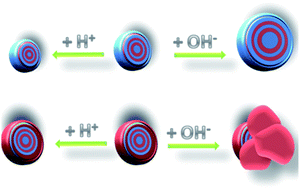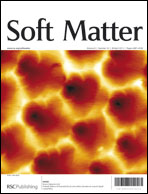Hollow nanocapsules made of polyelectrolytes, extensively useful for biomedical and biotechnological applications, are produced with a simple Layer-by-Layer approach using liposomes as template. The biocompatible polymers, alginate and chitosan, are alternatively adsorbed onto liposomes allowing the achievement of small size hollow nanocapsules with an average diameter of ∼280 nm. Hollow nanocapsules, positively as well as negatively charged, depending on the number of layers, can be produced in a reproducible way. The produced nanocapsules are demonstrated to be sensitive to pH changes of the environment because of the behaviour of the polyelectrolytes composing the multishell walls; in fact they exhibit major variations in size depending on the bulk solution pH. Measurements of dynamic light scattering (DLS) and of ζ-potentials as well as scanning electron microscopy (SEM) observations demonstrate a correlation between the pH and the shrinking/swelling of the nanocapsules. While nanocapsules having chitosan as outer layer are stable only at acidic pH, nanocapsules having alginate as outer layer remain stable at all the pHs used in this study (pH 4.6 to 8). The pH-optimum for the shrinking event is in the acidic range. The role of both the polymers in the shrinking/swelling event is demonstrated by comparing nanocapsule populations with alginate (7 layers) or chitosan (8 layers) as the outer layer.

You have access to this article
 Please wait while we load your content...
Something went wrong. Try again?
Please wait while we load your content...
Something went wrong. Try again?


 Please wait while we load your content...
Please wait while we load your content...